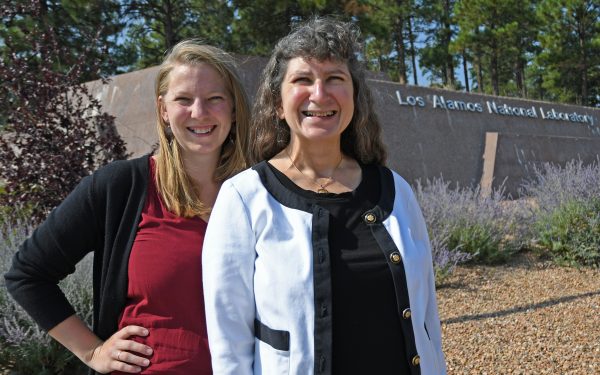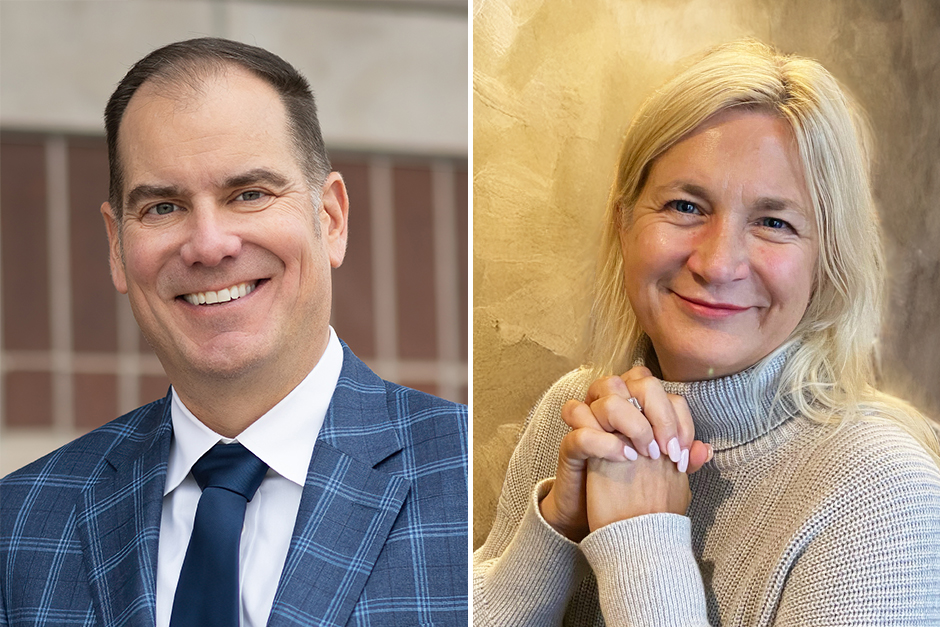Love of math led to nuclear forensics
As the testing of nuclear weapons escalates, the work of Joyce Guzik ’82 becomes increasingly significant.

Guzik is part of the nuclear threat assessment group at the National Nuclear Security Administration’s Los Alamos National Laboratory. She uses nuclear forensics to determine the capabilities of other countries’ arsenals.
“We are developing capabilities to analyze the fallout of a nuclear test to track the progress of other countries that may be developing nuclear weapons,” she says. “We can also apply these methods in the event that a terrorist uses a nuclear device.” Other organizations in the U.S. government and military also track nuclear arsenals, and her group is called on by these agencies for their technical expertise on emerging nuclear weapons capabilities.
While she spends the majority of her time on nuclear weapons analysis, she spends up to 20 percent of her time peering into the sun and other stars.
“My work on nuclear weapons is classified and I can’t publish papers about it,” she says. “The Los Alamos lab encourages its scientists to stay current by engaging in research in unclassified areas, so we can publish and present our findings to the scientific community. Nuclear weapons physics has a lot of overlap with physics of the sun and other stars.”
Her study of the sun employs helioseismology (measuring the vibrations of the sun’s outer layer) to study the interior composition, including the rate at which hydrogen turns into helium as it burns in the core. She also uses data collected by NASA’s Kepler spacecraft, which looks for earth-like planets that orbit other stars, to determine how closely those stars resemble our own sun. Similarities might help astronomers select stars upon which to focus in their search for extraterrestrial life.
Guzik says she came to Cornell College knowing she wanted to spin her favorite subject, mathematics, into a career. She majored in physics because it was a field that allowed her to apply math in her work. She ended up with three majors—math, physics, and Russian studies—and a Ph.D. in astrophysics from Iowa State University. Her postdoctoral fellowship at Los Alamos turned into a full-time position.
She now mentors postdoctoral fellows and undergraduates, including past Cornell Fellows Andrew Reindel ’09, who studied sunspots, and Suzannah Wood ’13. Wood recently returned to Los Alamos as a postdoctoral candidate working with Guzik.
“I’ve worked with students from many colleges and universities,” Guzik says. “Cornell students are great. They’re very well prepared.”
Traveling to conferences has taken Guzik around the world. While her science background has provided her the tools for a career, she says her Russian studies major led to a love of international travel. “My first trip abroad was to the Soviet Union as an undergrad at Cornell,” she says. “Since then, I’ve had the great fortune to travel worldwide, mostly to scientific conferences, but I try to squeeze in some sightseeing when I can.”
Another interest at Cornell has also resurfaced. Guzik played clarinet in Cornell’s wind ensemble and orchestra her first year, and saxophone in the jazz ensemble for three years. She recently reignited her passion for music and plays in several local groups around Los Alamos.
She and her husband, Tom Beach, also have a deep interest in model rocketry. Beach, whom she met in the ISU physics program, edits a national model rocket publication, and Guzik served for 12 years on the board of the National Association of Rocketry.
“In my worlds, I have to shift gears a lot,” she says. ”Studying the liberal arts helps me communicate and present my work. It’s not all science.”



